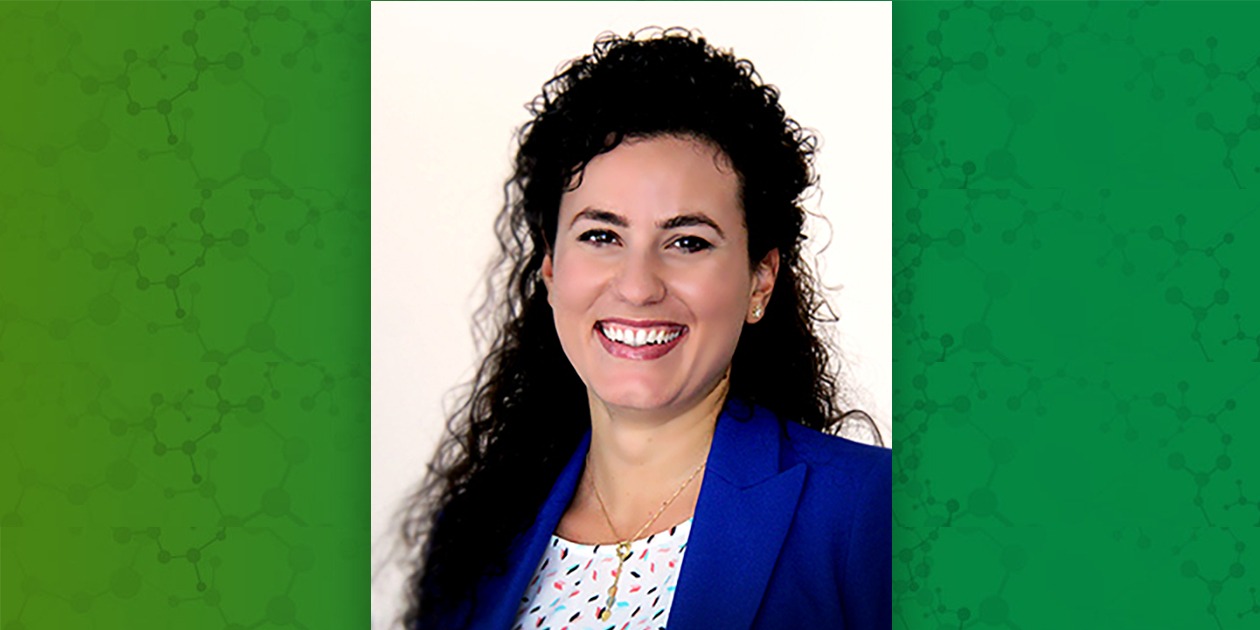One NIEHS grant recipient is taking air pollution research to a new level and expanding knowledge about how climate change-related weather events such as wildfires can affect maternal and infant health.
Rima Habre, Sc.D., from the University of Southern California (USC), integrates diverse data on individual exposures and lifestyle factors to bolster her research, and her team incorporates innovative technology to capture complex personal exposures with greater precision.
“My work is showing that we can go beyond the broad generalizations and assumptions at the population level and contextualize our science at the individual level,” said Habre during her virtual NIEHS Keystone Science Lecture on March 9.
Precision environmental health
Air pollution can come from outdoor air, indoor sources, and other exposures posed by our individual behaviors, according to Habre. Accounting for all of those exposure sources helps scientists advance precision environmental health, she added. That research framework — a focal point for NIEHS — incorporates analysis of an individual’s exposures and genetic makeup to better understand disease risk and aid prevention efforts.
“That is exactly what many in the biomedical research community sought to promote when the Genes, Environment, and Health Initiative (GEI) was developed in 2006,” noted David Balshaw, Ph.D., head of the NIEHS Exposure, Response, and Technology Branch. The U.S. Department of Health and Human Services and the National Institutes of Health launched GEI to expand research into gene-environment interactions and their influence on human disease.
Habre’s work to refine and strengthen personal exposure analysis is critical to efforts at NIEHS and beyond to advance precision environmental health, according to Balshaw.
Climate-related risks to maternal, infant health
Air pollution is the single largest environmental risk factor in the global burden of disease, noted Habre.
“Climate change is contributing to that by worsening air quality, increasing wildfires, and widening health disparities,” she added.
 This photo shows a wildfire in Los Angeles, California. Scientists at the MADRES Center assess personalized air pollution exposures among pregnant Hispanic and African American women who live in the city. (Photo courtesy of PTZ Pictures / Shutterstock.com)
This photo shows a wildfire in Los Angeles, California. Scientists at the MADRES Center assess personalized air pollution exposures among pregnant Hispanic and African American women who live in the city. (Photo courtesy of PTZ Pictures / Shutterstock.com)Habre is the director of exposure assessment at the USC Maternal and Developmental Risks from Environmental and Social Stressors (MADRES) Center for Environmental Health Disparities. Researchers there investigate air pollution, built environment factors, and wildfire exposures as well as social stressors that affect the health of pregnant and postpartum women, fetal growth, and infant health. MADRES participants are predominantly from Hispanic and African American communities in Los Angeles.
Personal exposure monitoring combined with geospatial modeling indicates that women experienced on average 130.5 days, and up to 211 days, of wildfire smoke exposure during pregnancy between 2016 and 2020, with preliminary evidence of decreased fetal growth, according to Habre. The number of active wildfires burning in Southern California also was an issue, with up to 11 fires burning at the same time on a given day in pregnancy. Habre noted that wildfire smoke includes complex chemical mixtures that vary by what is being burned, such as natural materials like trees versus manufactured items.
Her team uses reference and commercial grade sensor technology to monitor population-level exposures, and they couple that data with information provided by participants regarding personal behaviors, activity patterns, and mobility. Personalized risk models can be developed by documenting locations and travel data (walking versus driving), where participants spend time (outdoor parks or inside their homes), and household air pollution sources such as secondhand smoke.
“A lot of science went into establishing population-level risk standards, but the science needs to happen at the individual level, too,” said Habre. “We are all so different, and our personal environments will have varied sources, chemical composition, and toxicity.”
 Habre works on her research in the USC public health air quality lab. (Photo courtesy of John Davis)
Habre works on her research in the USC public health air quality lab. (Photo courtesy of John Davis)Expanding exposure assessments
Personal monitoring devices and geospatial technologies allow for scalable, personalized exposure assessment in health studies, according to Habre. She works with Alex Bui, Ph.D., from the University of California at Los Angeles (UCLA), and Sande Okelo, M.D., Ph.D., from the UCLA Pediatric Asthma Center of Excellence, to investigate childhood asthma as part of the Los Angeles PRISMS center.
The PRISMS team developed the BREATHE Kit (Biomedical REAl-Time Health Evaluation Kit) to combine environmental exposures, health records, and location tracking through geolocation technology (see sidebar). The kit includes wireless devices and platforms developed to collect specific data through smartphones, smartwatches, and dedicated applications. The collected health information is overlayed with GPS- and Bluetooth-enabled sensors and wearable devices that capture personal exposures, medication, and lung function.
 The BREATHE Kit harnesses the power of technology to enhance understanding of personal environmental exposures. (Image courtesy of Rima Habre)
The BREATHE Kit harnesses the power of technology to enhance understanding of personal environmental exposures. (Image courtesy of Rima Habre)Health risk models created from these measurements can result in just-in-time, contextually smart, and adaptive interventions, but that is just the beginning of what is possible, noted Habre.
“Precision medicine is where all of this work is headed,” she said, referring to efforts across the biomedical community to promote personalized diagnosis, prevention, and treatment of disease.
Citation:
Bui ATA, Hosseini A, Rocchio R, Jacobs N, Ross MK, Okelo S, Lurmann F, Eckel S, Dzubur E, Dunton G, Gilliland F, Sarrafzadeh M, Habre R. 2020. Biomedical REAl-Time Health Evaluation (BREATHE): toward an mHealth informatics platform. JAMIA Open (3)2:190–200.
(Jennifer Harker, Ph.D., is a technical writer-editor in the NIEHS Office of Communications and Public Liaison.)
Source link
factor.niehs.nih.gov

